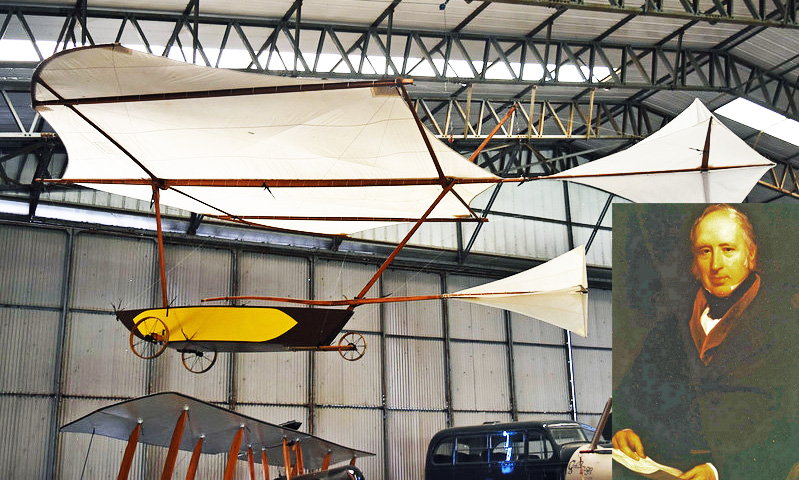
The glider and the seatbelt
Yorkshireman Sir George Cayley (1773-1857) was a man ahead of his time. For the want of a suitable engine, he would have invented the powered aircraft; instead it was the glider which successfully made it from his drawing board to the skies in 1849. The pilot, or intrepid passenger, was a 10-year-old boy and, scaling up his experiments, Cayley persuaded a grown man to be carried aloft in his 1853 version.
The story goes that the gentleman was Cayley’s coachman and after the 900ft-long. flight, he promptly resigned! His survival of the glider’s crash-landing was doubtless partly due to the seatbelt which Cayley had thoughtfully designed and added to the wheeled carriage beneath the wings. A galloping horse drew the contraption (which Cayley called a “governable parachute”) to lift-off and one can only imagine the astonishment of any onlookers.
Previously, would-be aviators had tried to imitate birds with flapping wings but Cayley’s extensive research showed that wings should be fixed and he identified, and produced calculations for, lift, weight, thrust and drag as being the key factors. He delved into all forms of aircraft including airships and helicopters, and he laid a foundation just waiting for the technology to catch up decades later.
(Images LtoR: Replica of Cayley’s glider in the Yorkshire Air Museum by Alan Wilson at Flickr.com / CC BY-SA 2.0 and Sir George Cayley portrait, Public Domain)
